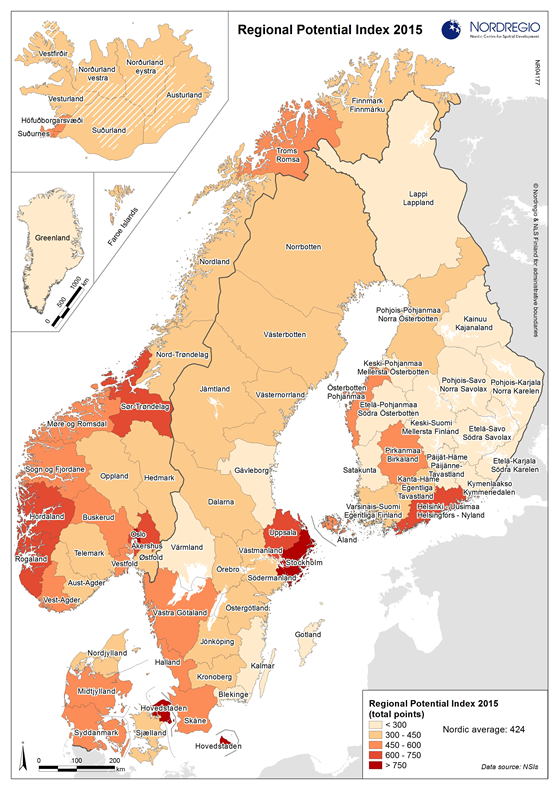
New report from the Nordic Centre for Spatial Development (Nordregio) - „State of the Nordic Region 2016” for the first time ever, included a Regional Potential Index that compared the performance of 74 administrative regions in the Nordic countries. Taking into consideration the regions’ key economic, demographic and employment indicators, the report concluded that the Oslo region was the top performer.
Following Oslo were the Greater Copenhagen Region (Hovedstaden) and Stockholm. Four other Norwegian regions were in the top ten – Akershus (4), Rogaland (6), Sør-Trøndelag (7) and Hordaland – joined by Helsinki-Uusimaa (5), Uppsala (9) and Greater Reykjavík (10).
The Swedish regions of Jönköping and Jämtland as well as Norway’s Troms, Nord-Trøndelag and Finnmark were the most improved regions in the Nordics, while Denmark’s Zealand region took the biggest tumble.
Nordregio spokesman Julien Grunfelder said that all three of the report’s top performers are clearly on the upswing.
“Oslo, Copenhagen and Stockholm are now among the richest regions in Europe. The growth is driven by, among other things, rapid population increases. In 20 years, we have grown by 2.7 million more people to a total of 26.5 million and 97 percent of the increase has occurred in the 30 largest metropolitan areas,” Grunfelder told The Local.
The Nordregio report found that all regions in Denmark, Norway and Iceland have increased in population, while the populations of Sweden and Finland increased in urban areas and further decreased in the countries’ already less populated areas.
Of the Nordic area’s largest urban areas, Oslo saw the biggest population growth between 1995 and 2015, increasing 33.6 percent from 996,857 inhabitants to 1.33 million. Stockholm grew by 28.4 percent and is still the largest in the Nordics with 2.21 million inhabitants, followed closely by Copenhagen. The Danish capital region had a 2015 population of 2.13 million, a 13.7 percent growth over 1995 figures.
The fastest growing of all Nordic urban areas was Stavanger, which saw its population shoot up by 36.8 percent and is now home to 290,000 people.
Read the full version of „State of the Nordic Region 2016” report: www.nordregio.se
Source: www.thelocal.no
Graphics: nordregio.se



 EUR 4.2509 zł
EUR 4.2509 zł USD 3.6535 zł
USD 3.6535 zł DKK 0.5695 zł
DKK 0.5695 zł SEK 0.3776 zł
SEK 0.3776 zł NOK 0.3573 zł
NOK 0.3573 zł